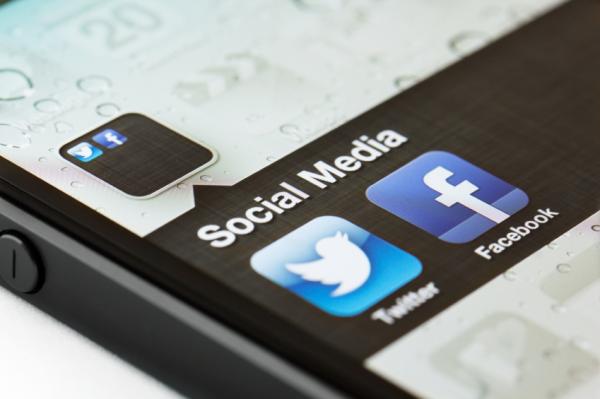
In today's digital age, where our lives are intertwined with online activities, understanding and monitoring internet data usage in megabytes (MB) has become pivotal. Whether browsing on mobile devices or utilizing home internet, being aware of your data consumption helps manage costs, optimize performance, and avoid overages or speed throttling.
This comprehensive guide from oneHOWTO aims to empower users with step-by-step instructions, enabling them to track and manage their internet MB usage effectively.
Data Consumption
Monitoring your internet MB usage is crucial for several reasons. It allows you to:
- Gain control over expenses by understanding how much data you use.
- Prevent unexpected charges from surpassing data limits.
- Optimize data consumption for better performance.
- Avoid speed reductions due to exceeding data thresholds.
- Implement smart usage practices for a seamless online experience.
Understanding the data usage for various online activities is essential. Here are approximate figures for data consumed during typical online tasks:
Web browsing
Simple pages use about 0.5 MB; comprehensive pages with images and videos use about 2 MB.
Emails
Sending or receiving text-only emails consumes roughly 0.02 MB. However, attachments increase data usage.
Music
Streaming or downloading a song uses around 5 MB, equivalent to 1 MB per minute. Online radio for 15 minutes uses about 15 MB. How much data does Spotify use? Find out in our related article.
Video streaming
Streaming or downloading a full HD 1080 YouTube video uses around 15 MB.
Video calls
A 5-minute Skype audio call consumes about 3 MB, while a video call uses approximately 20 MB.
Easily monitor WhatsApp data usage through the app's settings under 'Network Usage.'
These figures provide a general idea; actual data usage can vary based on content quality and duration.

How to check your data usage
There are a few different ways to check how many megabytes you have left on your internet plan.
On your computer
- Go to your ISP's website and log into your account.
- Click on the "Data usage" or "Usage meter" tab.
- You should see a graph or table that shows how much data you have used in the current billing period.
- To calculate how much data you have left, subtract your current usage from your total data allowance.
On your Android device
- Go to your phone's settings app.
- Tap on "Network & internet."
- Tap on "Mobile network."
- Tap on "Data usage."
On your iPhone device
- Go to your phone's settings app.
- Tap on "Cellular."
- Tap on "Cellular data usage."
On your router
- Log into your router's interface.
- Look for a section on "Data usage" or "Bandwidth monitoring."
- You should see a graph or table that shows how much data you have used in the current billing period.
Third-party apps
There are also a number of third-party apps that can help you to track your internet MB usage. These apps typically provide more detailed information than your ISP's website, such as a breakdown of your data usage by app and website.
Some popular third-party data usage tracking apps include:
- My Data Manager
- DataEye
- NetLimiter
Tips for optimizing your internet MB usage
This section will provide you with tips on how to optimize your internet MB usage and avoid overage charges. By following these tips, you can save money on your cellular bill and get the most out of your data plan.
- Stream video in low quality: most streaming services offer different quality settings. By streaming video in low quality, you can significantly reduce your data usage.
- Use a data-saving mode on your streaming device: many streaming devices, such as Roku and Chromecast, offer a data-saving mode that can reduce your data usage by up to 50%.
- Avoid downloading large files: if you need to download a large file, such as a software update or movie, try to do it over Wi-Fi instead of mobile data.
- Disable background app refresh: many apps continue to run in the background even when you're not using them. This can use up a lot of data. To disable background app refresh, go to your phone's settings app and tap on the "General" > "Background app refresh" option.
- Use a VPN: a VPN can help to reduce your data usage by encrypting your traffic and routing it through a different server. This can be especially helpful if you're using a public Wi-Fi network.
It is important to note that these tips are general in nature and may not be applicable to all users. Please consult your cellular provider for specific information about your data plan and how to manage your data usage.
Now that you know how to check your MB usage, see how fast your internet connection is by reading this other article.
How to avoid overage charges
Overage charges can be a costly surprise, especially if you have a limited data plan. But there are a few things you can do to avoid them:
- Set a data usage limit: most ISPs allow you to set a data usage limit. This will send you an alert when you reach your limit so that you can avoid overage charges.
- Switch to a higher-speed plan: if you're regularly exceeding your data limit, you may want to switch to a higher-speed plan with a larger data allowance.
- Consider a data overage protection plan: some ISPs offer data overage protection plans that can help you to avoid overage charges. These plans typically have a monthly fee, but they can save you money if you regularly exceed your data limit.
If you want to read similar articles to How to Check How Many MB of Internet You Have, we recommend you visit our Internet category.